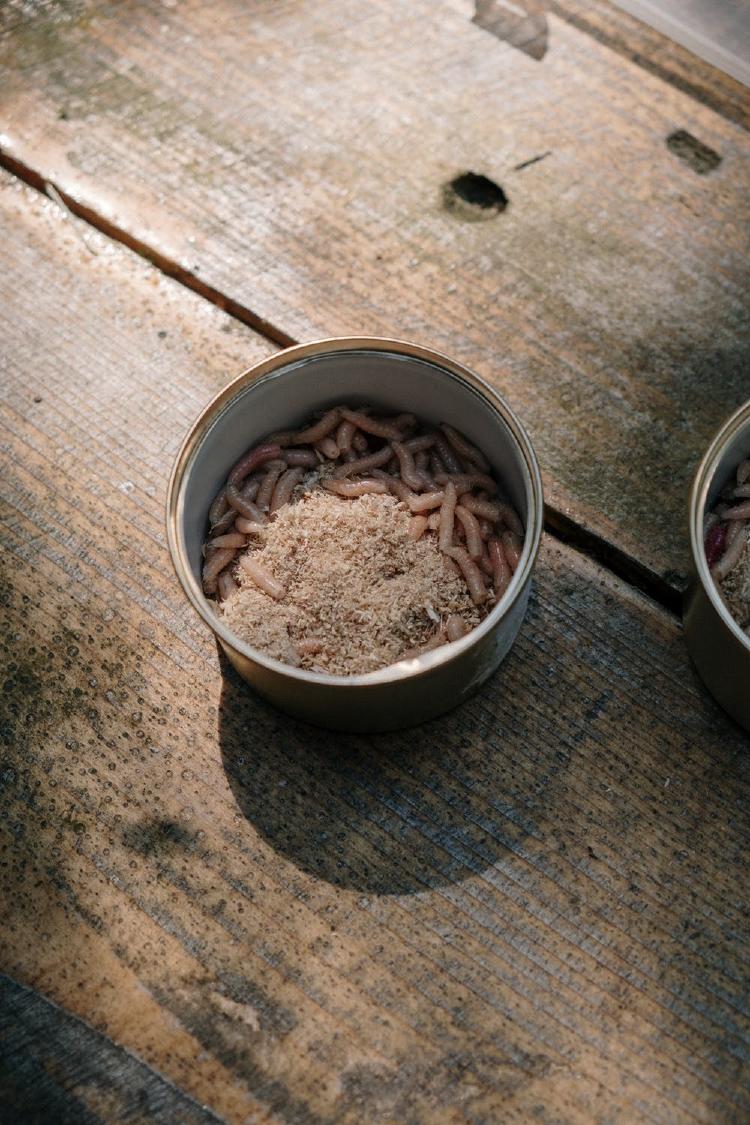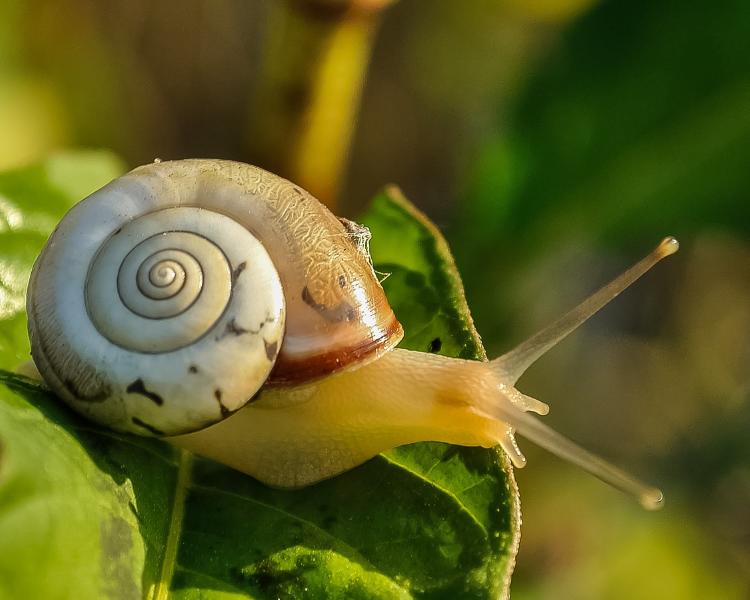
I bet that when you first saw bugs in your compost you wondered what they were doing here? That is what happened to me when I found bugs in my compost! My top advice is don't panic! The best thing to do is knowing what kind of bugs are in your compost and also to understand their function. Everyone has compost problems, and also everything can be solved with good information :)
Pill bugs belong to the isopods´ family. They are black, small and friendly to look at. Pill bugs are permanent habitants of your compost, they eat and process food scraps which ends up boosting the creation of fungi and bacteria. The latter ones help to accelerate the decomposition process. Also, pill bugs feed themselves from decaying plants. To survive, pill bugs need moisture. The highlight is that they help you to identify your moisture level: if you have many pill bugs then you have a high level of moisture. Add some browns to the pile to correct that. But if you have a few pill bugs then it's time to add water to your pile. Their presence doesn't hurt your compost, it is good to have them around.
Bugs in my compost! What to do with them? Ants are in the top list of garden and compost inhabitants. At least 8 of 10 people have ants in their garden. They are almost everywhere. In compost, they aren't really a problem since they don't damage your browns and greens. However, they may be annoying. There are different types of ants, predaceous or omnivores. They function as decomposers and help to aerate your compost pile. Despite their benefits, you better pay attention when there are many ants. Their presence means that your compost pile is too dry, or you are not turning your compost as expected. Add greens and water to improve dryness and start turning your compost by using a tumbler. Read this article to find the best tumblers: Best Tumbling Composter: Find The One Tumbler For You
Desperate because you found some maggot in compost? First thing to know is that maggots are the larva of flies. They tend to eat vegetable and fruit scraps and feel attracted to them. My recommendation is to avoid leaving them on top of the compost bin and mix it between the greens and the browns, so they do not put their eggs. A good thing is that they are excellent decomposers of organic stuff. What do their presence indicate? Compost problems. Your ratio of greens to browns isn't balanced, try to start revising your inputs and learn more about it here: The Perfect Compost Ratio: Greens to Brown Balance
The most known maggots are fruit flies and black soldiers’ flies, they won't harm your compost pile but they are utterly irritating. This is the moment in which you wonder, why am I having bugs in my compost? These flies prefer moisture areas so try to balance your greens and browns to achieve the perfect ratio and maggots won't appear.

Oh no! There are bugs in my compost! As opposed to the maggot in compost mentioned above, centipedes are bad visitors for your compost. They are predators who will eat all the insects living in your compost. That will definitely slow down the composting process, since fungi and bacteria process all the greens and browns to obtain the desired compost. So, how can you avoid them? They live in moisture areas. I advise you to pay attention to the moisture of your compost and if it is too wet, then add some browns to counteract. You should know that millipedes belong to the same family of centipedes, but they are great decomposers of organic materials. They will be beneficial to your compost.
Slugs also appear in everyone's list of -compost problems-. I used to have these bugs in my compost. Some people love them, others hate them. The truth is that these mollusks bring more good than bad to your sustainable life. As ants, they are great decomposers. They help to stimulate other bugs ‘growth by shredding fruits and leaves. When do they appear? At the beginning of the composting process, in the early stage, before the compost pile heats up. It is common to have some slugs in the bin, be aware if there are more than expected. They like wet zones so that may indicate your compost is way too wet. Add browns and everything will be back to normal.

Most of the bugs in my compost described above are good. However, this isn´t the case hahaha. Beetles are going to destroy and eat all the other good bugs of your compost pile. They are predators who will end up destroying all the effort you put in creating a balanced compost ideal for bacteria and fungi to grow in. Don't dare to kill them, the only thing you need to do is carry them into other areas of the garden.
Are these bugs in my compost dangerous? No! Spiders are incredible insects who will help you to eliminate common pests that may intrude in your compost. There are different types of spiders, the thing you need to pay attention to are web builders. You may encounter some of them in your compost pile, that means that spiders are in your compost and they may be tiresome. My advice? Turn your pile at least once a week so that organic material can activate, and composting is faster. Turning brings incredible benefits to compost problems.
Moisture, greens and browns, turning…. What else do you need when composting? Aeration! Worms are perfect to aerate compost. They do it by opening tunnels within the compost pile. Worms also help to shred vegetable and fruit scraps. They also release mucus that improves the quality of the soil and provides healthy nutrients to greens and browns. Having worms in your compost is a sign that you are doing things correctly. Worms appear when the composting process is about to end. They are present when the pile has already reached the hot temperature required to obtain good and golden black compost. Remember that worms are used for vermicomposting! Vermicomposting is a process of compost in which worms are the main decomposers of organic material. The resulting compost is known as vermicompost. It works as an incredible soil fertilizer.
Check this article: Vermiculture: How it start with it and take care of your Worms
Ideal buddies to have in your compost pile. They process and convert food scraps, leaves, wood, paper into compost within a short period of time. Gardeners are super happy when they see them in compost piles as I was when I found bugs in my compost. A plus of these maggots is that their excrement produces good odor compost. They recycle the nutrients of the organic material and help to accelerate the decomposition process. These flies are known to be the faster decomposer bugs in the world!
You may be interested: How to Get Rid of Fruit Flies: Tips and Tricks to Follow

Yellow jackets are constantly confused with bees. They are pretty similar on the outside, but they have different features. If you come to discover yellow jackets on your compost, you better start doing something about it. You need to avoid a nest of yellow jackets in your compost pile! That would be something very bad for your compost. What can you do to prevent it? Turn the pile so that they won't have time to stay still. However, you may already have a nest of them in your compost. Don’t worry! Try with commercial traps to remove the nests, if it is too rooted to the compost then leave it like that till the following year so that you can safely remove it.
Soil mites are tiny scavengers that usually appear in compost and potting soil. They are small and black, usually soil mites feel attracted mostly by browns: dry leaves, newspaper, woodchips. Soil mites are so tiny that it is difficult to identify them, but they are similar to spiders. Are they part of the compost problems? Definitely NOT! Soil mites are considered to be extremely beneficial to compost. They feed themselves from vegetables and fruit scraps. There is another type of mite: the Orybatid mite. You can find them in wooded areas. Such as decks, backyards, homes or wood container plants. Both mites are good for your compost, however there is a type of mite that isn´t. It is known as “earthworm mite”. They are red, very easily detected on black.
Now that you have already learnt about bugs in my compost, you can start composting consciously. Always have in mind the four most important things in the process: keep it wet, be sure that there is a good entrance of air, turn it regularly and E N J O Y the process! Bugs will be always present somehow, knowing their function and how to control them will bring you incredible results. Bugs are a very important part of nature, ignoring them isn´t the right path.